Chasing a dance to relax
Jerusalem, Jan 25, 2016 -- Maybe it’s because I do so many pictures of funerals and of people being killed that I like to do something else. Maybe it’s because when I was a kid, I was a bird watcher. I don’t know. But this is the stuff I do for fun.
I started photographing the starlings a few years ago. I’ve known about the phenomenon for a while, but I was always busy with other things. As you know, in Israel photographers and other media people keep pretty busy. Then once I decided to go down and check it out. I honestly don’t remember exactly when, a few years back.
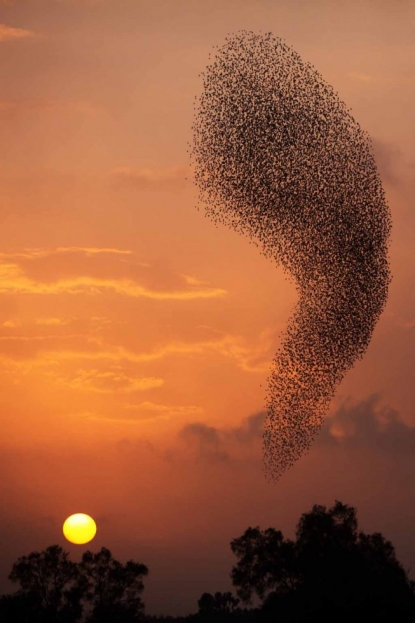 January 14, 2016. (AFP / Menahem Kahana)
January 14, 2016. (AFP / Menahem Kahana)The black starlings are migrant birds and they come all over Israel. You can find them in the north, in the Golan, in the Negev. These birds, before they settle down for the night, they do this dance. And when you have a big flock, the dance can look quite spectacular.
In the south of Israel, around the town of Rahat, there is a big garbage dump site. It’s called Dudaim. It’s enormous, it has most of the garbage of Israel. Thousands of tons deposited every day, a lot of activity with bulldozers. It’s a stinky place.
But as you can imagine, with all that garbage around, it’s a good place for birds, and you have all sorts of birds here. The starlings also come here and spend most of the day foraging for food.
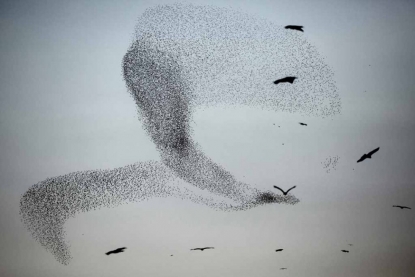 January 4, 2016. (AFP / Menahem Kahana)
January 4, 2016. (AFP / Menahem Kahana)So when I had a chance -- when I was in the area for another story and had some time -- I would go to the dump site an hour or so before sunset, before they left the place and went somewhere to sleep. The idea was to see where they would go.
As soon as they left, I would jump in the car and try and follow them. They need to sleep in a wadi, in the trees. So it was tricky following them with a car. You have to go offroad and the roads in the winter aren’t always very good after all that rain.
It took me a while to actually find the place where they would go to sleep. But after a few times, I finally found the place, a wadi.
So the next few days, I would just go there an hour or so before sunset and wait. Now they don’t sleep in the same exact spot every night, so it took a bit to catch them.
But eventually they came. It was amazing. It was 5:00-5:30 and I was waiting and waiting at the place and didn’t see anything and was about to leave. And then this huge cloud came. Just enormous.
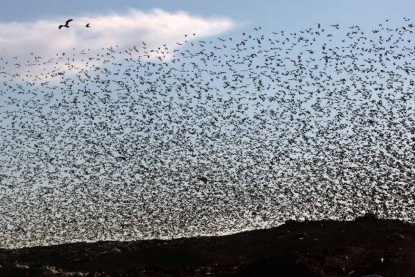 January 4, 2016. (AFP / Menahem Kahana)
January 4, 2016. (AFP / Menahem Kahana)But it was so late that there wasn’t enough light, I couldn’t even shoot.
The day after I came to the same place, but they came a half hour earlier. I was lucky to be standing in front of the sun and it was a beautiful sunset, so I got some really nice pictures.
To shoot these birds, you have to have a lot of luck. You have to know where it’s supposed to happen, but you never know when it will happen or if it will at all.
Another thing is that they never do this for very long. The longest I’ve shot them over all these years was about 10 minutes.
This year, it was just one minute. One minute that I had to shoot.
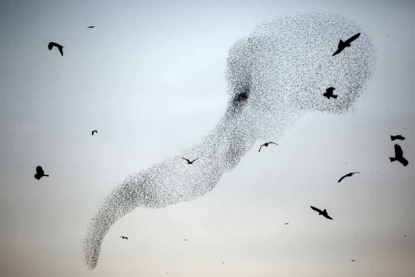 January 4, 2016. (AFP / Menahem Kahana)
January 4, 2016. (AFP / Menahem Kahana)This year I’ve shot them twice and you see that amazing difference in the color. One is almost red and the other one is much lighter. That’s because it was an hour or so earlier. And last year, it was even more different, it was dark, almost purple.
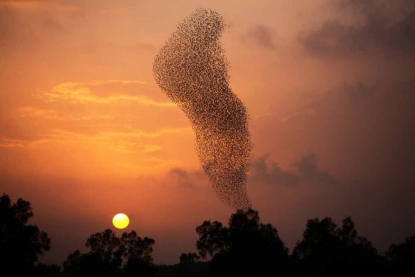 January 14, 2016. (AFP / Menahem Kahana)
January 14, 2016. (AFP / Menahem Kahana)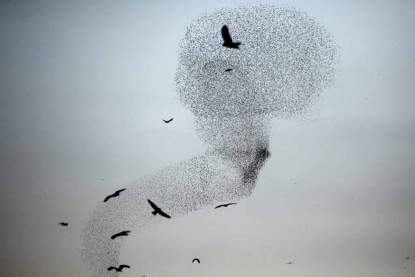 January 4, 2016. (AFP / Menahem Kahana)
January 4, 2016. (AFP / Menahem Kahana)I don’t know if I’ll shoot them again this year. It’s not that far of a drive, only about an hour and a half from Jerusalem, but it’s really busy at the moment. I have a ton of events -- the West Bank, the settlers, all these stabbing attacks. So every time I go out of the city, I have to be very careful and calculate my moves so that if something happens it’s covered by a photograph, I always have to make sure I have a backup in Jerusalem. So I can’t just go out and drive to the desert to shoot birds whenever I want.
They haven’t had their high season yet. That’ll be in a few weeks from now, in February, when we’ll have many more birds coming from Eastern Europe. So it’ll be much easier to see them.
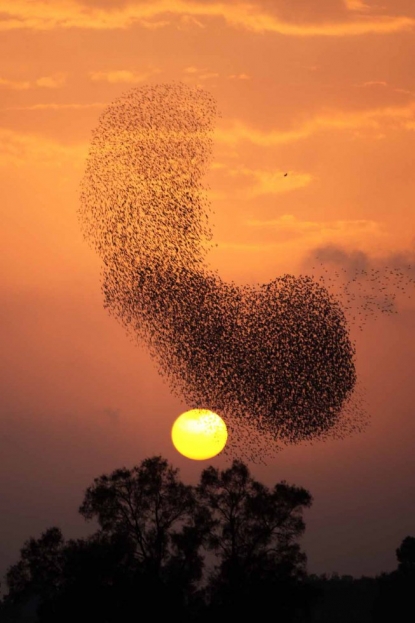 January 14, 2016. (AFP / Menahem Kahana)
January 14, 2016. (AFP / Menahem Kahana)I’ve already done this twice this year and three times in a single year is a bit much, but if I’ll be in the south anyway, why not.
I really do love it. It’s something else, it’s fresh air, sometimes some friends come along with me. Don’t get me wrong, I love doing all sorts of stories. I love working in the territories, but it’s a completely different story and the situation is such that you have to be careful. You’re always on the lookout, aware of your surroundings, tense a bit. You’re always taking a risk in a way.
But when I drive to the south, there is no feeling of risk, there is no tension, there is no looking over your shoulder. If the birds come, if they don’t come, it’s fine, it doesn’t matter. I just enjoy the scene and the area. I just relax.
Menahem Kahana is an AFP photographer based in Jerusalem.
This blog was written with Yana Dlugy in Paris.
 January 14, 2016. (AFP / Menahem Kahana)
January 14, 2016. (AFP / Menahem Kahana)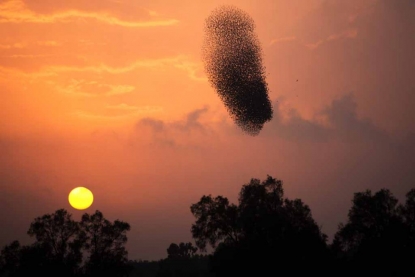 January 14, 2016. (AFP / Menahem Kahana)
January 14, 2016. (AFP / Menahem Kahana)
